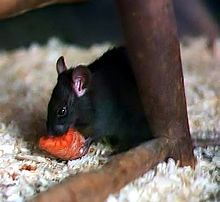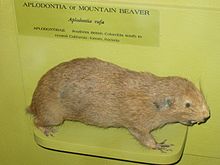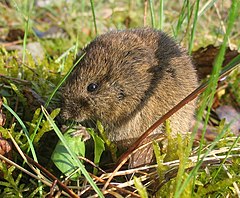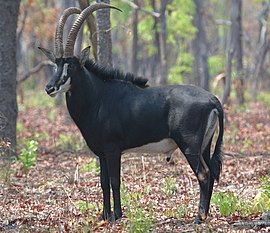The reasons why mutations cannot support evolutionist claims may be summarized under these main headings:
1.
Mutations are mostly harmful.
Since they occur at random, they always damage living things.
Logically, any unconscious intervention in a perfect and complex
structure will damage it, rather than causing it to develop.
Darwinists maintain that species emerge from one another through
structures and organs appearing as a result of countless fictitious and
beneficial mutations.
The American geneticist
B.G. Ranganathan explains:
'Most
mutations are harmful since they are random, rather than orderly changes
in the structure of genes; any random change in a highly ordered system
will be for the worse, not for the better. For example, if an earthquake were
to shake a highly ordered structure such as a building, there would be a
random change in the framework of the building, which, in all
probability, would not be an improvement.'
The evolutionist scientist
Warren Weaver said
the following about a report prepared by the Committee on Genetic
Effects of Atomic Radiation, set up to examine the mutations arising as a
result of nuclear weapons in the wake of the Second World War:
'Many
will be puzzled about the statement that practically all known mutant
genes are harmful. For mutations are a necessary part of the process of
evolution. How can a good effect - evolution to higher forms of life -
result from mutations, practically all of which are harmful?'
 These photographs show some of the damaging effects of mutation on the human body.
These photographs show some of the damaging effects of mutation on the human body.
A process that cripples individuals or leaves them ill cannot, of course, give rise to any progress.
In a scientific paper, David Demick, an American pathologist, wrote this to say about mutations:
'Literally thousands of human diseases associated with genetic mutations have been
catalogued in recent years, with more being described continually. A
recent reference book of medical genetics listed some 4,500 different
genetic diseases. Some of the inherited syndromes characterized
clinically in the days before molecular genetic analysis (such as
Marfan's syndrome) are now being shown to be heterogeneous; that is,
associated with many different mutations.
With
this array of human diseases that are caused by mutations, what of
positive effects? With thousands of examples of harmful mutations
readily available, surely it should be possible to describe some
positive mutations if macroevolution is true. These would be needed not
only for evolution to greater complexity, but also to offset the
downward pull of the many harmful mutations. But, when it comes to
identifying positive mutations, evolutionary scientists are strangely
silent.'(David Demick, "The Blind Gunman," Impact, No. 308, February 1999)
DNA Repair
Research has revealed that there are
protective elements in the cell that prevent genetic errors arising.
God has designed a number of DNA repair systems and proofreaders
(enzymes), each to take on different repair problems. For example, there
are enzymes involved with mismatch excision repair (MMR) that recognize
wrongly paired bases, and nucleotide excision repair (NER), which is a
universal "cut and patch" repair mechanism. NER operates to remove the
mistake — called a lesion — and fill in the gap with new DNA. One may
liken this to a dentist drilling out decay and replacing the hole with a
filling (the "filling" in DNA repair is a functional nucleotide). There
are also tiny molecular motors (see "Origins Issues,"
Acts & Facts, April
2004) called helicases (e.g., DnaB helicase and other multimeric
motors) that literally unwind DNA from the normal double-stranded state
into two single strands. Helicases accomplish this by rapidly breaking
hydrogen bonds between the nucleotides (the "ladder rungs" portion of
the molecule) in a manner somewhat like the way inchworms move. Other
specially designed enzymes must immediately keep the two single strands
apart once they are separated. From there, efficient repair of the DNA
continues. Occasionally this amazing repair mechanism fails — as all of
our systems eventually do — and a permanent alteration or change in that
portion of the DNA results. This is called a mutation. Of course,
mutations in critical areas can be deadly to an organism.(
Sherwin, F. 2004. Mending Mistakes—The Amazing Ability of Repair. Acts & Facts. 33 (6).)
Pierre Paul Grassé, who spent 30 years as professor of evolution at the Sorbonne, wrote this on the subject:
'The
probability of dust carried by the wind reproducing Dürer’s
“Melancholia” is less infinitesimal than the probability of copy errors
in the DNA molecules leading to the formation of the eye.'
2.
No new genetic information can be added to DNA as a result of mutation.
The components of the genetic information are removed and dismantled,
damaged or carried to other locations in the DNA. Yet mutations can
never cause a living thing to acquire a new organ or attribute.
It is therefore impossible for a brand new organ or
characteristic that did not exist before to appear by chance as the
result of mutations. Mutations have no power to bestow new information
on a life form that does not belong to it, or to turn it into a
different organism.
3. For a mutation to be transmitted to a subsequent generation, it must take place in the
reproductive germ cells or their precursors.
No change arising in any other cell of the body can be passed
along to later generations. For example, an embryo's eye may depart from
its original form by being subjected to radiation and other similar
effects, but this mutation will not manifest itself in subsequent
generations.
4.
The Infinite Amount of Time Needed for Hypothetical Beneficial Mutations
Even if we assume that mutations were effective and beneficial in
complex organs and structures requiring more than one mutation to occur
at the same time, mathematicians still say the problem of time is an
acute dilemma for Darwinists.
The evolutionist
George G. Simpson has performed another calculation regarding the mutation claim in question.
He admitted that in a community of
100 million individuals we assume to produce a new generation every day,
a positive outcome from mutations would only take place once every 274 billion years. That number is many times greater the age of the Earth, estimated at 4.5 billion years. (Nicholas Comninellis, Creative Defense Evidence Against Evolution, Master Books, 2001, p. 81)
5.
Pleiotropic effect:
Pleiotropy occurs when one gene influences multiple phenotypic traits.
Consequently, a mutation in a pleiotropic gene may have an effect on
some or
all traits simultaneously. This can become a problem when selection on
one trait favours one specific version of the gene (allele), while the
selection on the other trait favors another allele. The underlying
mechanism of pleiotropy in most cases is the effect of a gene on
metabolic pathways
which contribute toward different phenotypes.
http://evolutiondece...inary_Mechanism
http://evolutiondece..._is_a_falsehood

















